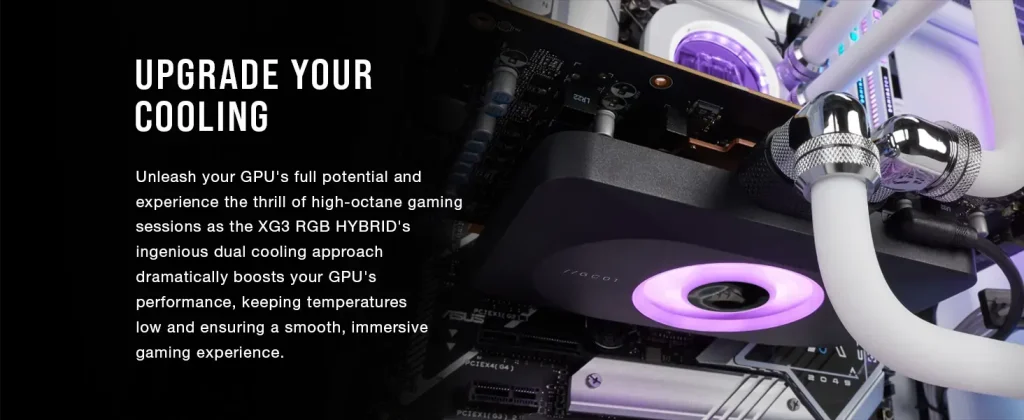As the demand for artificial intelligence continues to surge, **Amazon Web Services GPU cooling** has become a focal point for optimizing data center performance. With Nvidia’s powerful graphics processing units (GPUs) driving this AI boom, efficient cooling solutions are essential to manage the immense heat generated by these energy-intensive systems. Amazon engineers have risen to the challenge by developing the innovative In-Row Heat Exchanger, a bespoke cooling solution that integrates seamlessly into existing and new AWS data centers. This specialized hardware not only addresses the needs of Nvidia’s latest GPU models but also enhances the overall operational efficiency of AWS AI solutions. By moving away from traditional air cooling and exploring advanced liquid cooling systems, AWS is positioning itself at the forefront of the growing AI data center landscape.
In the rapidly evolving realm of cloud computing, maintaining optimal performance for high-capacity graphics systems is paramount. Advanced cooling mechanisms, such as those implemented by Amazon Web Services, are crucial for managing the heat output from cutting-edge Nvidia GPU configurations. The introduction of innovative cooling technologies, like the In-Row Heat Exchanger, demonstrates AWS’s commitment to developing robust infrastructure solutions designed specifically for AI workloads. This strategic focus on cooling is not just about temperature control; it’s about maximizing computing efficiency and ensuring scalable solutions in future data centers. By opting to create proprietary cooling solutions, AWS is asserting its leadership in the competitive landscape of AI and cloud technology.
Innovative Solutions for Nvidia GPU Cooling
Amazon Web Services (AWS) is tackling the challenges of cooling Nvidia GPUs with groundbreaking technologies designed to meet the increasing demands of AI workloads. The In-Row Heat Exchanger (IRHX), developed by AWS engineers, presents a tailored solution adapted specifically for the high-performance requirements of generative AI systems. As AI capabilities expand, the performance demands on processors like Nvidia’s graphics processing units (GPUs) have surged, necessitating advanced cooling systems that can efficiently manage heat without compromising space or efficiency.
The IRHX is engineered to mitigate the limitations associated with traditional air cooling systems that have sufficed for earlier generations of Nvidia GPUs. Now, with cutting-edge installations such as the GB200 NVL72, which integrates 72 GPUs in a compact rack, the need for innovative cooling solutions becomes paramount. This technology promises easier integration in both existing infrastructure and new builds, helping AWS set a standard in the realm of AI data centers.
Frequently Asked Questions
What cooling solutions does Amazon Web Services use for Nvidia GPU cooling?
Amazon Web Services (AWS) has developed the In-Row Heat Exchanger (IRHX) specifically designed to cool Nvidia GPUs efficiently. This custom solution allows for effective thermal management of the energy-intensive AI systems powered by Nvidia’s graphics processing units, ensuring optimal performance in data centers.
How does In-Row Heat Exchanger improve Nvidia GPU cooling in AWS data centers?
The In-Row Heat Exchanger improves Nvidia GPU cooling by integrating directly into data centers, allowing for more efficient heat dissipation without occupying excessive floor space. This system effectively manages the high thermal output of Nvidia GPUs, which are crucial for AI workloads.
What are the benefits of liquid cooling systems for AWS AI solutions involving Nvidia GPUs?
Liquid cooling systems can enhance the performance of AWS AI solutions utilizing Nvidia GPUs by providing superior thermal regulation. However, Amazon ultimately opted to develop the In-Row Heat Exchanger because traditional liquid cooling systems posed challenges such as excessive space requirements and increased water consumption.
Why did AWS choose not to implement third-party liquid cooling systems for Nvidia GPU cooling?
AWS decided against third-party liquid cooling systems for Nvidia GPU cooling due to concerns about spatial constraints and the inefficiency of available solutions in meeting the scale required for their AI data centers. The custom In-Row Heat Exchanger effectively addresses these concerns.
How does AWS’s cooling technology support the operational demands of generative AI using Nvidia GPUs?
AWS’s cooling technology, particularly the In-Row Heat Exchanger, is tailored to support the heavy operational demands of generative AI that utilize Nvidia GPUs. By maintaining optimal thermal conditions, this technology helps ensure sustained performance and efficiency in AI computations.
What role do Nvidia GPUs play in AWS’s AI data centers and their cooling solutions?
Nvidia GPUs are pivotal in powering AWS’s AI data centers, driving complex computations for generative AI models. The cooling solutions, such as the In-Row Heat Exchanger, are engineered to manage the significant heat generated by these GPUs, ensuring reliable and continual operation.
How scalable is the In-Row Heat Exchanger for Nvidia GPU cooling in AWS environments?
The In-Row Heat Exchanger is designed to be scalable for Nvidia GPU cooling in AWS environments, making it suitable for both existing and new data centers. Its flexibility allows AWS to adapt to growing AI workloads effectively without compromising space or efficiency.
What makes AWS’s approach to Nvidia GPU cooling different from other cloud providers?
AWS’s approach to Nvidia GPU cooling stands out due to its development of proprietary solutions like the In-Row Heat Exchanger, tailored specifically for the thermal demands of next-generation graphics processing units, unlike other cloud providers that may rely on third-party systems.
| Key Points |
|---|
| Amazon Web Services (AWS) developed the In-Row Heat Exchanger (IRHX) to cool Nvidia GPUs used for AI applications. |
| The IRHX can be integrated into existing and new data centers to support next-generation AI workloads. |
| AWS evaluated third-party liquid cooling solutions but concluded they would require more space and water resources than feasible. |
| The new cooling solution is vital as Nvidia GPUs demand significant energy, necessitating effective cooling. |
| Nvidia’s GB200 NVL72 integrates 72 GPUs and supports training extensive AI models. |
| AWS aims to reduce dependence on third-party suppliers by developing its own hardware, positively impacting profits. |
Summary
Amazon Web Services GPU cooling technology is at the forefront of optimizing performance for AI processing. As demand for AI capabilities increases, efficient cooling solutions like the In-Row Heat Exchanger developed by AWS become crucial to operate high-performance Nvidia GPUs. This innovative cooling hardware emphasizes AWS’s commitment to maximizing efficiency and sustainability while meeting the growing needs of AI workloads in data centers. By focusing on in-house development of cooling systems rather than relying on third-party solutions, AWS not only enhances its service reliability but also solidifies its position as a leader in the cloud infrastructure market.



